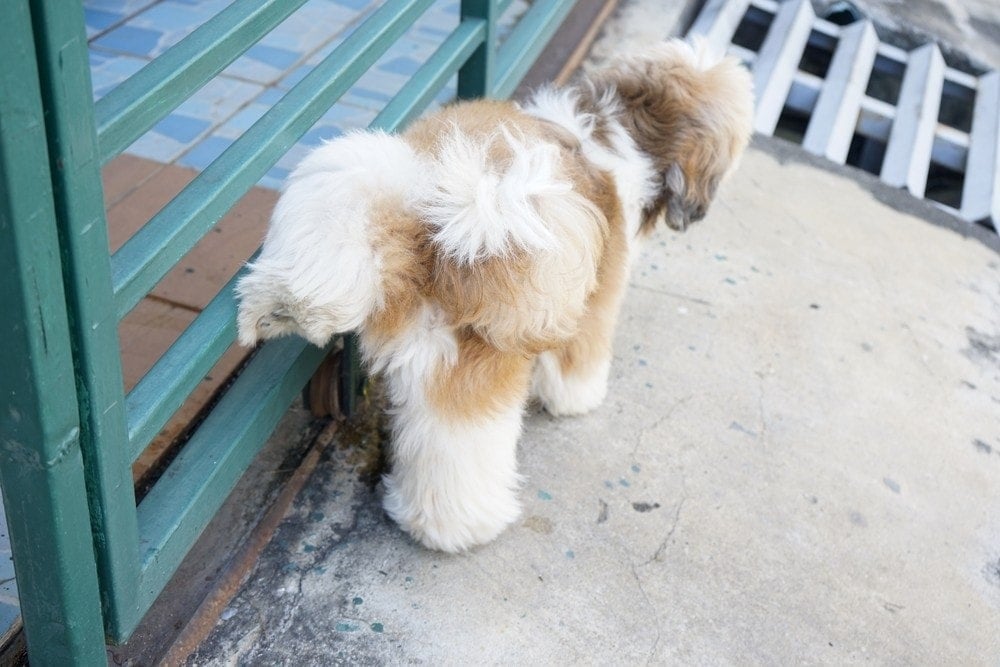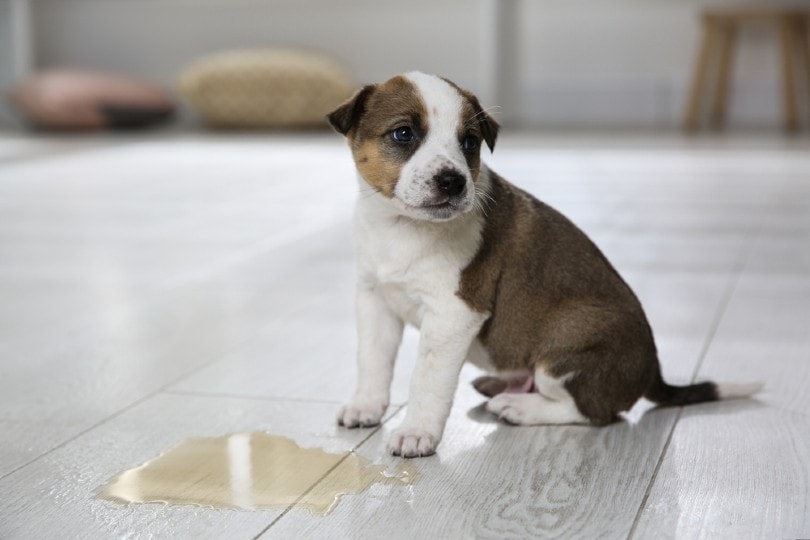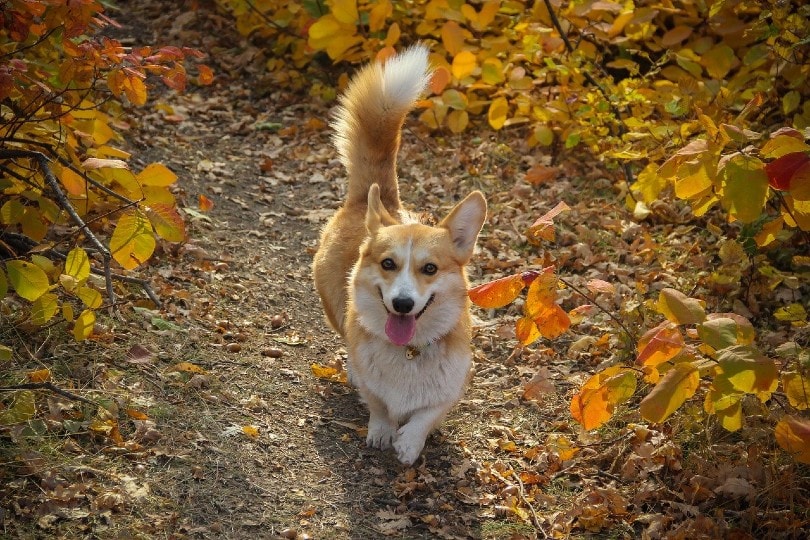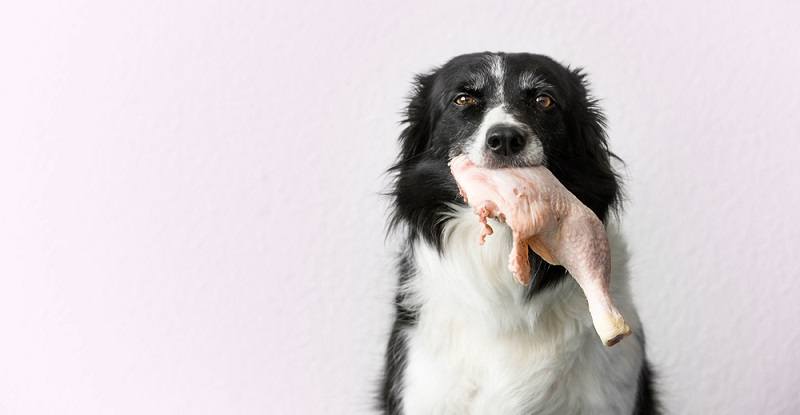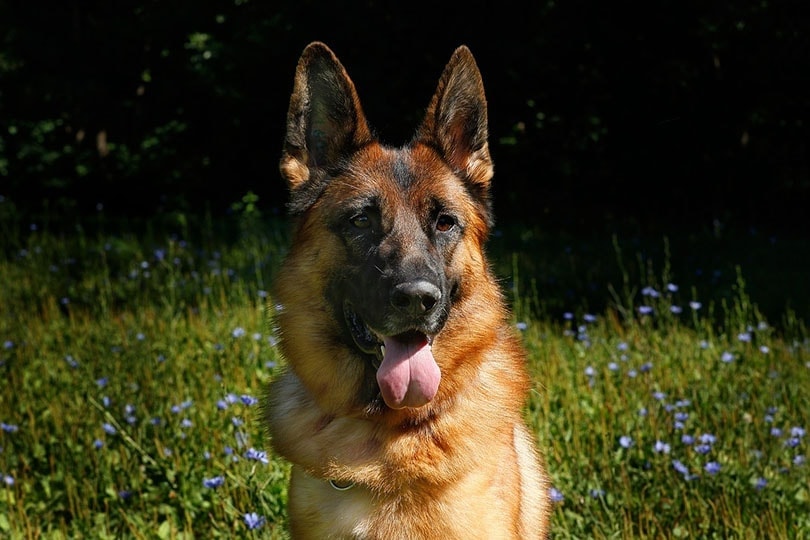Dogs are creatures of instinctual habits and routines that many of us don’t understand. Some of these behaviors can be cute or funny to watch, while others cannot be accepted when the dogs live as house pets, such as marking in the house.
What Is Dog Marking?
Marking occurs when a dog pees on something with a small amount of urine. This behavior may occur for many different reasons, but it usually has to do with claiming a piece of territory.
You have probably seen it many times without giving it a thought when they do it outside. They lift their leg to pee on specific fences, trees, the same fire hydrant every time, and other areas. When it happens outside, it isn’t a problem; it’s their way of having conversations with other dogs that walk in the area.
However, when it starts to occur inside the house, this behavior cannot be encouraged or ignored.
Why Dogs Mark
Dogs may mark for many different reasons, especially if they have not been spayed or neutered. For many dogs, this behavior only occurs inside the house a couple of times in their life. However, sometimes it becomes more frequent and more of a problem.
Dogs are pack creatures, and a pecking order always has to be sorted out with other members of the pack. In the past, one of the ways that dogs would establish dominance was by leaving their smell in their urine for other dogs to sniff.
However, keep in mind that several medical issues may seem like urine marking at first. Talk to your vet about problems such as urinary incontinence, infections, or other similar diseases. If your dog is not properly house trained, it might be a different behavioral problem.
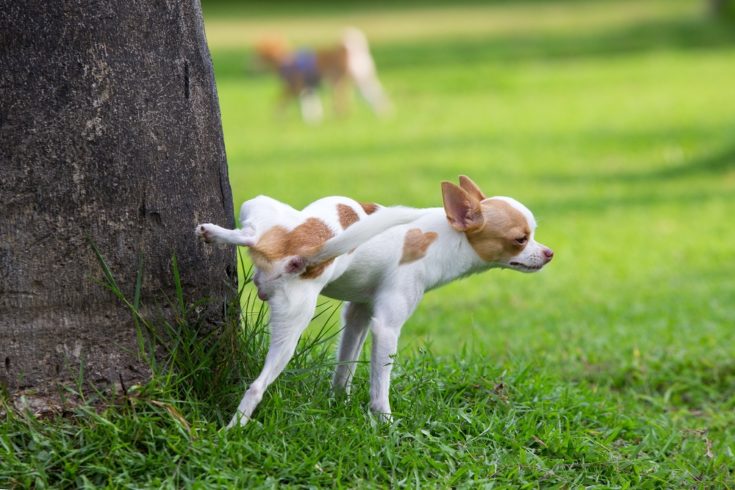
The 3 Reasons for Sudden Dog Marking
Inside the house, there are many reasons that a dog who never had a problem before might be exhibiting issues with sudden marking. It is best to try and figure out what the cause is to understand your dog’s behavior. Knowing the problem also helps correct the issue much faster.
1. Anxiety
Some dogs who suffer from anxiety may be prone to marking them as a form of expressing their discomfort with new situations or emotions. If they don’t usually struggle with anxiety, the new feeling makes them feel insecure, even in a home they have been in for a long time.
Anxiety can be caused by a move or even the removal of something they were accustomed to having. An example is when someone moves out, such as a kid going to college.
The removal of familiar sounds, routines, or a person can be enough to make the dog feel insecure and worried.
2. Territorial Response
Dogs are territorial creatures, some breeds more than others. If a dog is not accustomed to other dogs being in their space, then they might mark over the scent of another pup. Even if there is one more than one dog who lives in an area, a new one with an unfamiliar scent can still cause issues.
A territorial response might happen if a guest brings over their dog, and the dog of the house can smell their scent on a piece of furniture or another object.
3. Introduction of Something New
The introduction of something unfamiliar into the home is the most prevalent cause of sudden marking by a dog that doesn’t regularly commit such offenses. Dogs can be quite adaptable, but if they’ve known the same house, furniture, people, and pets for years, the introduction of even something small can seem significant in their world.
Babies or Roommates
Bringing a new baby home introduces unfamiliar noises and smells into the house for the dog. It also commonly disrupts the routines that dogs expect. This action can often be enough to trigger urine marking until the dog becomes familiar with the new normal.
Although getting a new roommate or housemate is not as big of a disruption as bringing a baby home, consider this option if it happened soon before the dog began to mark.
Furniture
Oddly, for dogs who may already suffer from anxiety and still feel unstable in their home, something as trivial as bringing a new piece of furniture in can upset your pup.
Pets
Adopting a new pet into the home is perhaps one of the most apparent causes of marking in dogs. They have to suddenly accept a new animal into their territory, which may go against all their instincts. This feeling is especially prevalent in animals who have not been properly socialized.
Marking in a situation such as this can help the dog re-establish their dominance in the home. If the pup feels threatened by the new animal, this is often the case.
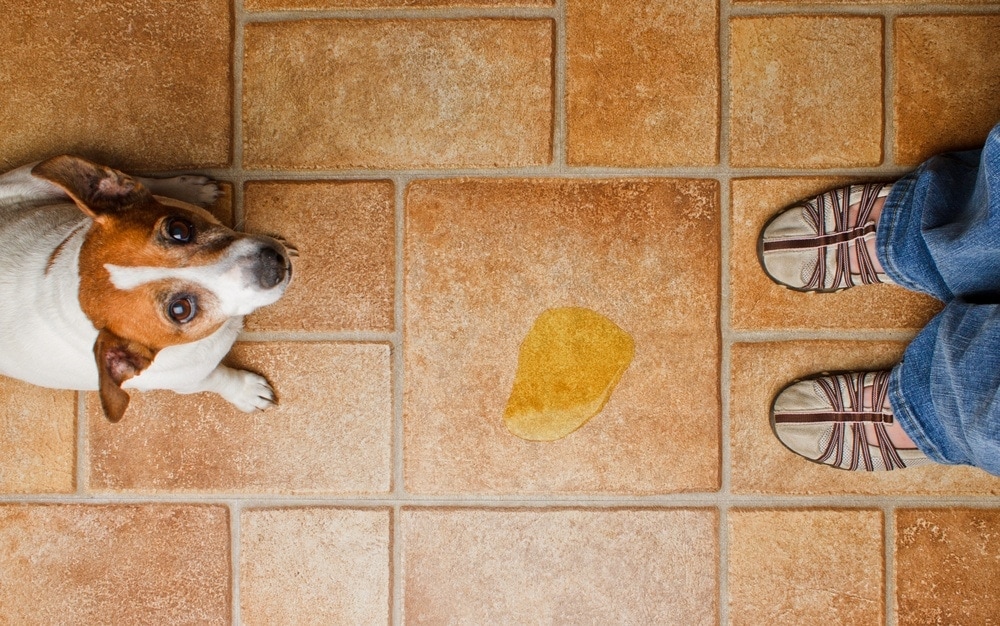
How to Prevent Dogs From Marking (5 Steps)
Gratefully, as with most negative behaviors, you can train urine marking out of a dog with the right methods. Gear yourself up with patience, consistency, and perhaps a blacklight to be ready to take on this problem.
1. Locate the Problem Areas
The first part of putting a stop to urine marking is to find the problem areas in the home. If a pet has only marked a couple of times in total, then it isn’t a problem. When dogs begin to do it more, though, it usually isn’t random. They pick specific areas and go back to them almost every day, forming a routine.
Go around with the blacklight at night or with the blinds drawn. Look all over any part of the house that is accessible to the dog. Look at the sides of furniture and every inch of carpet. Dog pee glows brightly under a blacklight and looks like a spray mark or solid circles on carpeting.
2. Clean the Area
The next step is to clean each of the problem areas thoroughly. Use a stain cleaner that is also an odor remover. When their odor is gone, they might have trouble locating their desired spot again or might just care less once the area has been neutralized.
3. Catch Them in the Act
The best way to train a dog out of negative behavior is to start by catching them in the act. Dogs learn faster this way because there is an immediate reaction to their action, and they can associate the good with the bad more quickly. Otherwise, they may not be sure what they are being punished for and won’t learn from it.
The best way to do this is to monitor the site. Keeping surveillance might be difficult if you can’t have someone there all the time. Another way to do it is to set up a baby camera so you can always see it. Let the dog roam freely around the home. Then, once they wander toward their site, observe their actions.
As soon as your pup raises their leg or squats down, walk into the room and firmly tell them “No,” and that is all. Don’t show any affection or congratulate the dog on anything.
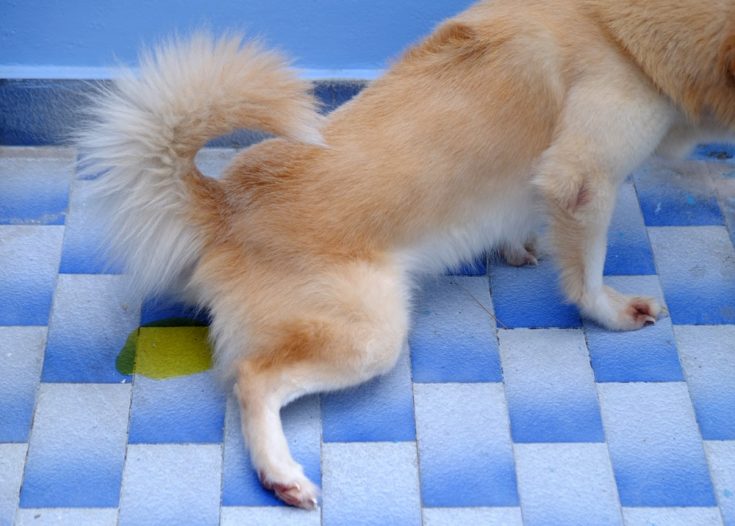
4. Give Them Time to Think
Once you have caught them in the act, now it’s time for a time out. No animal likes to be close to an area of excrement. However, neither does anyone who lives in the house. Tie them up with a leash so they have to sit or stand right next to the marked area.
Don’t allow them to move around the area. Give the pup 30 minutes to sit, supervised, to process the punishment and the action that caused it. This time is not meant to be pleasant, and they might start to cry or bark. You must ignore them and keep them there.
Don’t give them any positive feedback, like speaking to them, petting them, or anything else. They need to know that their behavior does not deserve positive feedback.
Once the 30 minutes is over, unclip them and allow them to move around. If they are severe markers, leave them alone and go back to watch the baby monitor. Repeat the process every single time you catch them committing their crime until they have learned.
5. Create Barriers
For some people with busy lifestyles, it is not possible to sit by a baby monitor for hours every day until the behavior has stopped. In these cases, do your best to block off the problem areas.
Conclusion: Daling With Dog Markings
Another useful method is when the dog is marking because of another animal’s scent in the home. Train your dog about what the appropriate behavior is in response to smelling the odor.
Expose your pup to the smell of another animal while on a leash. Immediately afterward, lead the dog outside to an appropriate place for urine marking. Repeat the process to establish it as a learned behavior.
There are several things to remember when training begins to prevent urine marking. One is to practice consistency. Some dogs who have been marking for a while can take weeks to change their habits. Others might only take a couple of days.
Before or during training, do your best to figure out what is causing the problem. Removing or dealing with potential anxiety can help eradicate the issue even more quickly.
With a firm hand and determination, urine marking can become another success story that helps establish a solid bond between you and your pup. You want to be friends with your dog, but you are also their trainer and teacher.
Featured Image Credit: Teeradej, Shutterstock

